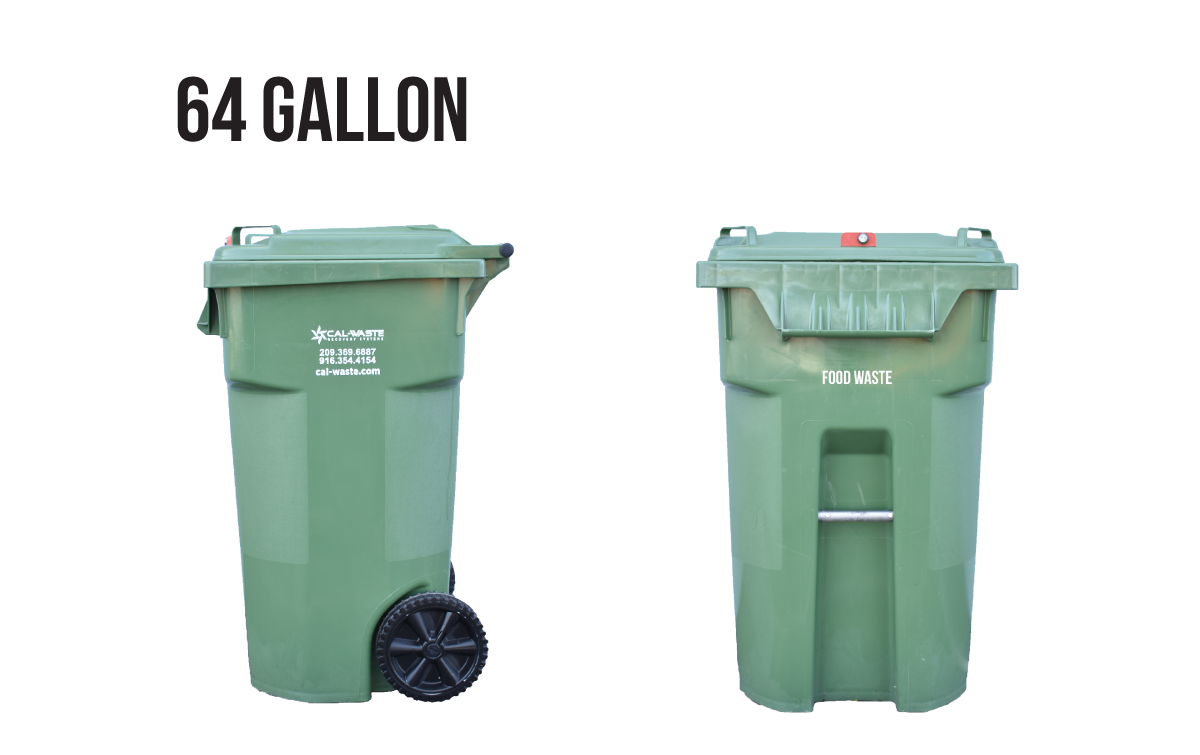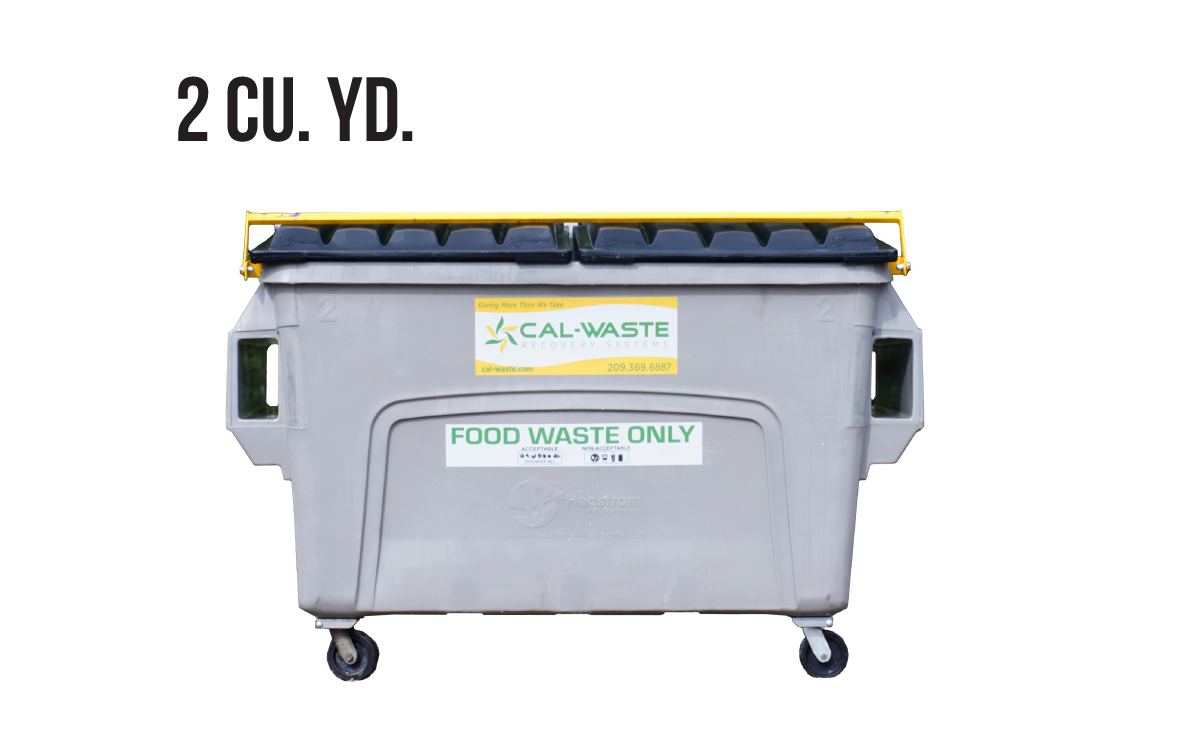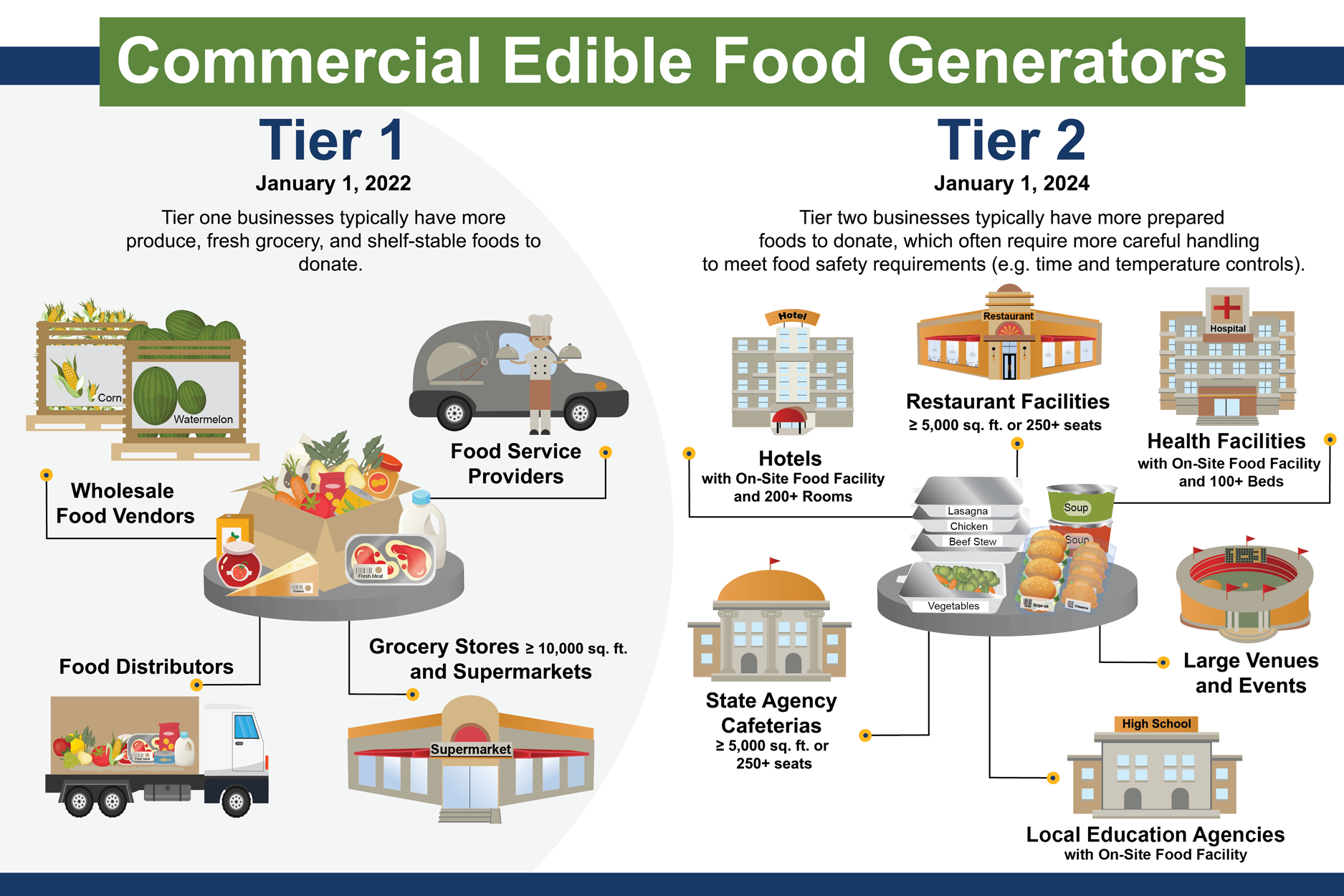Compliance with new Mandatory Commercial Organics legislation is easy with Cal-Waste’s Food Waste Recycling service.

Commercial Food Waste


California passed Senate Bill 1383 in 2016 that set reduction targets for methane emissions in a statewide effort to reduce emissions of short-lived climate pollutants (SLCP). The targets must:
- Reduce organic waste disposal 50% by 2020 and 75% by 2025.
- Rescue for people to eat at least 20% of currently disposed surplus food by 2025.
The state has assessed that landfills are the third largest source of methane. According to CalRecycle, the state’s enforcement agency for solid waste, 20% of the state’s methane emissions come from landfills. Organic materials like food scraps, yard trimmings, paper, and cardboard make up half of what Californians dump in landfills.
Senate Bill 1383 states that starting in 2022, all jurisdictions need to provide organic waste collection services to all businesses.
Visit CalRecycle’s Website For Legislative Information
Local Government Requirements and Resources
CalRecycle’s Responsibilities & Jurisdiction Reviewing Process
A Guide to Segregating & Recycling Packinghouse Waste from Retail Stores
State Senate Bill (SB) 1383 (2016) requires commercial edible food generators to donate all leftover or unsold food that would otherwise go to waste to a food recovery organization or service, such as food bank or soup kitchen.
Edible food is food intended for people to eat, including food not sold because of surplus, appearance, age, or freshness, and includes prepared food, packaged food, and produce.
To reduce unnecessary food waste and help address food insecurity, SB 1383 requires that by 2025, the State of California recover and redistribute 20 percent of edible food that would have otherwise been sent to landfills.
SB 1383 directs that:
- Edible food generators, who qualify as Tier 1 and Tier 2 Generators (described below), recover the maximum amount of edible food that would otherwise be landfilled or spoiled
- Food recovery organizations, edible food generators and jurisdictions maintain complete records of the quantity and types of food recovered

Tier One Commercial Edible Food Generators – Compliance Start Date 01/01/2022
- Grocery stores with a total facility size equal to or greater than 10,000 square feet
- Supermarkets with revenue equal to or greater than $2 million
- Food service providers, wholesale food vendors, and food distributers
Tier Two Commercial Edible Food Generators – Compliance Start Date 01/01/2024
- Restaurants with 250 or more seats or a total facility size equal to or greater than 5,000 square feet
- Hotels with an on-site food facility and 200 or more rooms
- Health facilities with an on-site food facility and 100 or more beds
- Large venues, large events
- State agencies with a cafeteria with 250 or more seats or a total cafeteria facility size equal to or greater than 5,000 square feet
- Local education agency with an on-site food facility
Commercial Edible Food Generator Requirements:
- Secure contracts or written agreements with Edible Food Recovery Services and/or Organizations to recover the maximum amount of edible food that would otherwise go to waste. Visit the CalRecycle website to read their Model Food Recovery Agreement to use as a reference when creating your own agreement.
- Maintain a list and copy of all Edible Food Recovery Services and/or Organization’s contracts or agreements that collects or receives its edible food.
- Maintain a record of the following for each contract or written agreement; 1) name, address, and contact information of the service or organization, 2) the types of food that will be collected by or self-hauled to the service or organization, 3) the established frequency that food will be collected or self-hauled, and 4) the pounds of food per month collected or self-hauled to a service or organization for food recovery.


